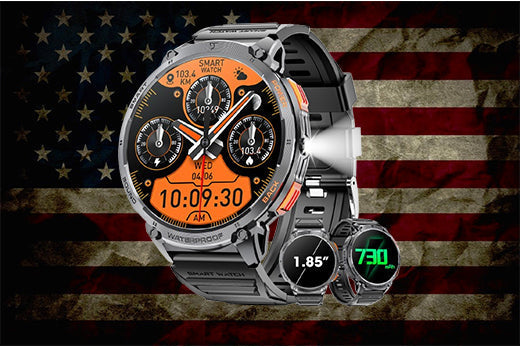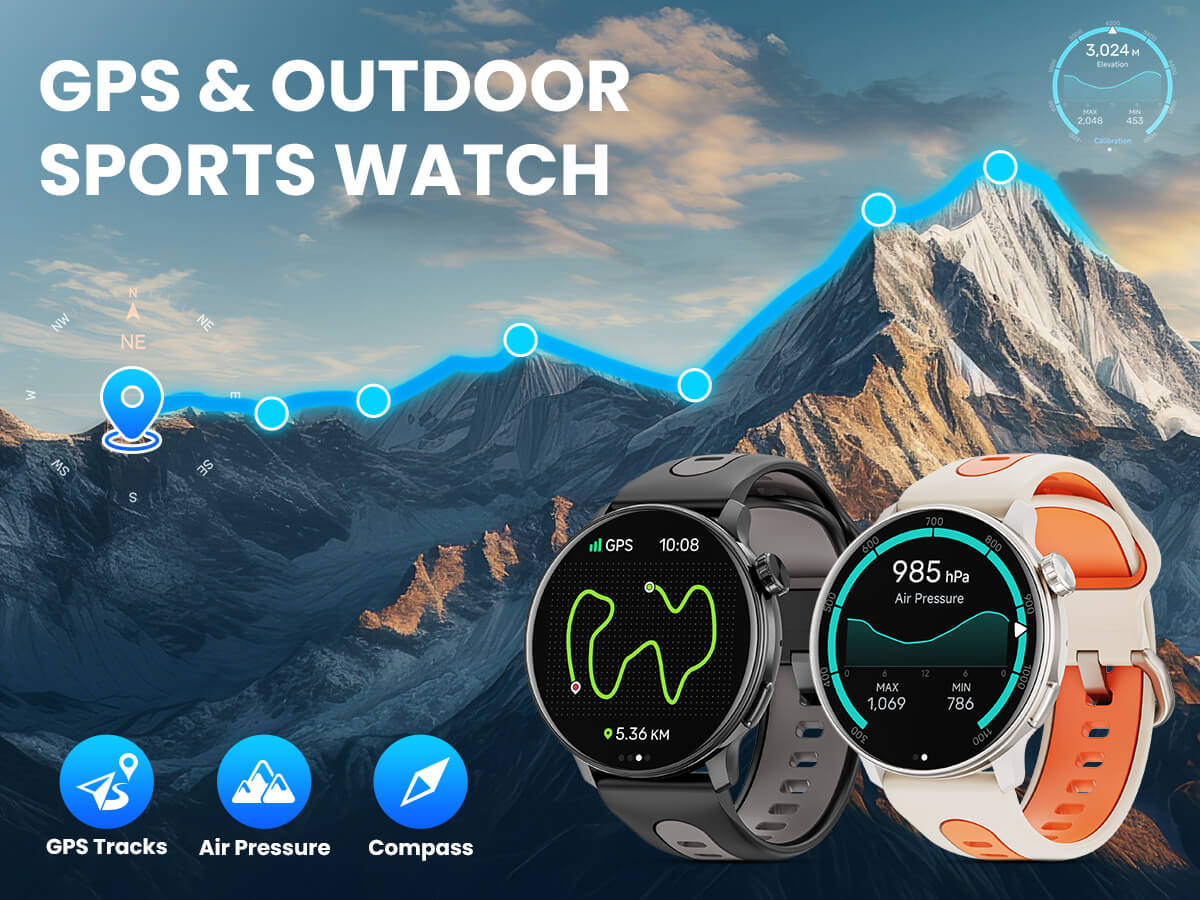We get it—smartwatches are everywhere, and price tags are all over the map. Some are under $50. Others cost more than your phone. So what’s the real difference? And more importantly, what’s worth your money?
What Determines the Price of a Smartwatch?
When you see smartwatches priced anywhere between $50 and $800, you're probably wondering what causes such a huge gap. Here are the five things that matter most:
-
Display Quality – Basic LCD screens are cheaper. High-end AMOLED or Retina displays (like those in Mingdaln K68) cost more but are far easier to read outdoors.
-
Features & Functions – Heart rate, blood oxygen, GPS, Bluetooth calling? The more it does, the more it costs. But some affordable watches, like the K68 or K67, pack in plenty without inflating the price.
-
Battery Life – Budget models last 1–2 days. Rugged or tactical watches often go 7–14 days on a charge.
-
Build & Durability – Lightweight plastic costs less. Rugged watches with military-grade shells, like Mingdaln’s models, are built to handle drops, water, and dust.
-
Brand Name & Ecosystem – Apple, Garmin, Samsung? You’re paying for brand trust and integration with other devices. No surprise those names carry a premium

Price Comparison by Category (2025)
| Price Range | What You Get | Best Fit For |
|---|---|---|
| Under $50 | Basic health tracking, alerts | Budget users, casual fitness fans |
| $80–$250 | AMOLED, GPS, Bluetooth call, sleep monitor | Gym-goers, hikers, remote workers |
| $250–$500 | Advanced sensors, sleek design | Tech-savvy users, professionals |
| $500+ | LTE, ECG, deep app integration | Premium buyers, serious athletes |
Is an Expensive Smartwatch Always Better?
Not necessarily. For example, the Mingdaln K68 sells for around $89.99 but includes features like an AMOLED display, IP68 water resistance, a built-in LED flashlight, and 24/7 heart rate tracking. It even supports Bluetooth calling. That’s a lot of value in a sub-$100 package.
Compare that to a $399 watch that only adds an app store and a polished UI. Are you really using those extras—or just paying for them?
Budget vs Premium: What’s Worth Your Money?
If you’re someone who exercises a few times a week, goes hiking occasionally, and just wants reliable health tracking, you don’t need to spend over $100. Watches like the Mingdaln K67 offer GPS, heart rate monitoring, and long battery life in a rugged shell that won’t quit.
But if you need tight iOS integration, or you’re a triathlete demanding advanced stats, premium brands do offer more—but only if you actually use it.
FAQ: Smartwatch Prices in 2025
Why are smartwatches getting more expensive?
Because more people expect them to do more—call, track, coach, even survive rainstorms and falls.
What’s the sweet spot for price and performance?
Between $70–$120. That range gives you features without paying for fluff. Mingdaln’s K68 and K67 are great examples.
Are budget smartwatches reliable?
Yes, especially when they come from brands focused on outdoor, fitness, or tactical performance.
Conclusion: Buy Smart, Not Just Expensive
The smartest watch isn’t the most expensive one. It’s the one that actually fits your life. Do you need GPS? AMOLED? Waterproofing? Bluetooth calling?
If yes, great. But don’t pay $400 just for a brand logo.
With well-priced models like the Mingdaln K68 and K67, you're not just saving cash—you’re making a smart choice.





Leave a comment
This site is protected by hCaptcha and the hCaptcha Privacy Policy and Terms of Service apply.